 - Amanda Wood, Community Relations Coordinator - Amanda Wood, Community Relations Coordinator
Derek Wold, Committee Chair of Steps for Life, shared that their goal for donations was increased three times, and that the Regina area campaign progress raised over $5,000!
Every day, there are 3 workers who die in Canada resulting from a workplace incident, which every year leaves over 1,000 families to heal and try to live on without their loved ones. If you were unable to attend this year, we hope to see you next year! The Steps for Life walk takes place across Canada, and in Saskatchewan, the annual fundraising walks are held in Regina and Saskatoon. We invite you to learn more about Steps for Life and welcome you to join us and continue to offer support to these families suffering and help us to prevent these incidents from happening altogether.
“I didn’t even see them!” are the classic words spoken following a 4-wheel on 2-wheel collision. After so many variations of the ‘unseen motorcycle’ story have been repeated by so many drivers after collisions, it’s time to ask the question – Why can’t other drivers see motorcycles in traffic? The first and foremost reason may be a result of habit. In the spring, motorcycles are not a fixed presence on Saskatchewan roads. Many "caged" drivers have not shared the road with motorcycles for over 5-6 months. Simply put, the 4-wheeler's subconscious mind may have forgotten that the 2-wheelers even exist. While that may explain some bad springtime habits, the mystery of the unseen motorcycle remains at large all season long. So, what else could be causing this lack of awareness? Let's look at some factors that seem to hide bikers from the eyes (and minds) of other Saskatchewan drivers. Selective attention: Brains set to ‘driving mode’ are looking for obstacles. Many young drivers train themselves to scan for car and truck shaped objects - a habit that does not account for slender, two wheeled objects. The solution? Be as visible as possible. Break through the visual bias that keeps you in the background. Honk, wave, and wear bright colours. Peripheral blindness: The average peripheral vision is weak at best, and is geared towards movement. With the average driver looking for box-like vehicles, that leaves motorcycles to get lost in the blur. The solution? Appeal to peripheral vision with movement. Hand waves, head nods, gentle speed variation. Stand out however possible. Blind spots: Not just applicable to rear mirrors and big fluffy dice, those pillars surrounding the windshield can already obscure a full-sized vehicle… Think of how completely a motorcycle gets swallowed up in these additional blind spots. The solution? Recognize when you are approaching a vehicle at the 10 or 2 o’clock positions, knowing that you may be obscured. Avoid lingering in rear gates that might fall into blind spots. Headlights: A motorcycle’s single headlight is more likely to be passed over and ignored, as it does not ‘match’ the two-beam headlights a driver is expecting to see on the road. 4-wheel vehicles with burnt out headlights experience the same effect – they don’t match the ‘normal’ form of a vehicle, so other motorists mysteriously don’t register their presence. The solution? Keep your headlights on bright in the daytime. Keep them clean and maintained at all times. Sunlight: Both fighter pilots and birds of prey attack “out of the sun”. Why? Because contrast (shadow) stands out more than anything when registering new objects. The difference is, these attackers want to be hidden, motorcyclists should not. The solution? Notice your shadow. If your shadow is pointing down road, those cars are having trouble seeing you! Avoid wearing black, grey or other background colours. Familiarity: More than 50% of collisions occur within 8km of the home, and 25% occur within the first 3 minutes of driving. These familiar roads close to home get neglected by drivers feeling a false sense of security. The solution? Don’t fall for this yourself! Those last few turns before arriving home may tempt the mind to wander. Stay vigilant from start to finish. At the end of the day, it is up to each rider to take safety into their own hands. As we learn the psychology behind this spring 'psych-out' that plagues many drivers during the early riding season, we can help remind drivers that yes, motorcycles exist, and yes, we are back for another year of sharing the road.
Nitrogen fertilizer usage in Western Canada has increased from 1.6 Million Tonnes to nearly 2.3 Million tonnes in the last decade, and Anhydrous Ammonia (NH3) makes up a large portion of this increase. Anhydrous Ammonia (NH3) is the richest form of nitrogen available for producers. As a fertilizer, it provides essential nitrogen for plants. It is safe to work with NH3 as long as it is stored, transported, and handled properly. Before working with Anhydrous Ammonia, ask your retailer to explain the step-by-step procedures for NH3 application.
Fertilizer Canada recommends these precautions for working with NH3:
Looking for more Agriculture Safety Resources to share with new & young workers? Leading the Council's vehicle and traffic training in Saskatoon is Michelle Reaburn, a long-time instructor and traffic safety specialist. In-person training gets a boost in the bridge city as Michelle teaches the Defensive Driving Course, which is always in high demand. Michelle delivers higher level training such as the Professional Driver Improvement Course, while also performing in-car driver assessments in Saskatoon. Michelle shares her story below. 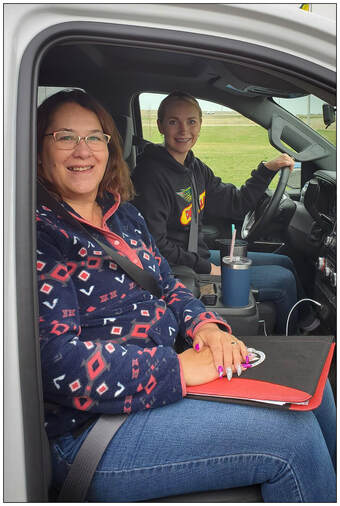 Michelle Reaburn performing an in-vehicle assessment in Saskatoon, SK Michelle Reaburn performing an in-vehicle assessment in Saskatoon, SK My background is in transportation. I started as a driver, moved into training, and then on to facilitation within the transportation industry. My focus has always been passenger safety and road safety. Over the last 15 years, I’ve expanded into developing and facilitating “Respectful Workplace” and “Leadership within the Workplace” courses. I have been teaching the Canada Safety Council's DDC and PDIC courses since 2014. In 2015, I was contracted by the Saskatchewan Safety Council to facilitate the SGI Defensive Driving course in Saskatoon. Driver Assessments were added into my responsibilities shortly after that. Since coming onboard full-time with the Council my portfolio has expanded to include “15 Passenger Van Safety” and “Trailer Towing”. “Skid Smart Collision Avoidance” and FIT testing are soon to be added. I am also on a couple of teams dedicated to the development of Council programming. I am really excited about this new opportunity and getting to know everyone. Training courses are hosted as open enrollment on our training calendar, with many more available upon request. View our traffic training courses to find the right fit for you.
Aerial Work Platforms are an extremely useful tool for any construction/industrial worksite. They allow workers to gain access to areas without the use of the deadly ladder. They are very smooth to operate and usually allow more than one worker to operate within them. With the right training and practice, they are the cat’s meow. In training, you learn one of the most dangerous actions when operating them is moving, repositioning, or travelling with them (Driving). Due to the design, what may look like a bit of a bump for the machine, turns into a massive bump for whomever may be within or on them. Utilizing fall protection equipment that RESTRAINS a worker within the platform is essential. This includes the use of a fall protection harness, a short lanyard, and a complete connection to the anchor point on the lift. In this case... there was obviously not so much of a complete connection. Does your operation work at heights? Do your employees know how to inspect a fall protection set up to ensure its proper operation? Our fall protection courses range from entry level to supervisor and inspector level training. By training with us, you support injury prevention efforts across Saskatchewan.
Saskatchewan's great spring awakening is underway. Have you peeled off the tarp and tuned up your two-wheeler for the spring riding season? Let's take a look at what hazards might await you on that first trip out of the garage. Does this springtime road hazard look familiar? Yes, under all that melting snow lies the classic motorcycle nemesis - sand and gravel. Especially on urban roads, these slippery hazards can wreak havoc on your traction, and are hard to spot from a distance. Let's go over some facts about these sandy patches that await Saskatchewan riders in the spring. First off, what does a slippery surface do to our tires? In our Basic Rider Training Course, riders learn that friction is our friend, with the force of friction directly proportionate to the applied load, or weight. The lesson here is more weight = more friction, and more friction = better traction. So, what happens to our bike when a slippery patch ruins our traction? The answer is.... Anything. If we are leaning into a corner and lose that critical friction, there is no telling what the bike will do. At that point, we are trying to avoid abrupt or sudden changes in weight distribution. The best course of action in this situation is to do more of 'nothing' than trying to do 'everything'. Do nothing... That doesn't sound like very useful advice, does it? As per usual, prevention is the name of the game when it comes to managing dirt and sand. And it may seem obvious, but speed really is the key here. Our friends at SGI lay out this advice for motorcyclists entering corners:
1. Reduce Speed. To make up for the possible lack of friction, reducing speed puts your bike's weight back in balance over both tires. 2. Avoid Sudden Moves. Sudden changes in speed or direction rock that weight back and fourth over the tires, which leads to a skid. 3. Use Both Brakes. Using both brakes in a straight line is the most effective way to stop in the shortest distance. If you are in a turn/corner be very careful when using the front brake, as the wheel could slip right out and cause you to go down. 4. Avoid the Worst Slippery Areas. Easier said than done! Try to find the best pavement, and use it. Certain sections of the road dry out faster than others. Try to stay in the best part of the lane at all times. Some extra facts to help your early season moto-mindset:
Got some sand and gravel tips? What other springtime hazards should motorcyclists be aware of? Help other riders by leaving a comment below!
What defines a legacy? For a company or employee, it may mean creating a top performing product. For a sports team or athlete, it may mean winning championships or MVP awards. Yet for those who dedicate their life to serving their community, defining a legacy means more than the glimmer of their trophy cabinet. Their legacy depends on the people who surround them. A legacy shared by those people who were inspired by their daily, yearly, and sometimes lifetime commitment to enriching the world that they live in. For this reason, these community champions will have their legacy defined by the very people that they served, educated, and inspired.
For Dr. Ronald Ailsby, this legacy has been established both in Saskatchewan and the world beyond by many patients, students, colleagues, and clients. With every person cared for, with every surgery completed, and with every research paper and scientific publication posted, his legacy grew. And now, with this unprecedented donation to the Saskatchewan Safety Council and the Safety Centre of Excellence project, Dr. Ailsby and his family have extended an invitation to the people of Saskatchewan to live a longer, healthier life for decades and perhaps centuries to come. story continues below video With this donation of land for the Safety Centre of Excellence, Dr. Ailsby’s legacy continues to grow in Saskatchewan. This chapter will be defined by those who will benefit most. By the children, the young workers, the rural populations, the seniors, and the new Canadians that the Safety Centre of Excellence will serve. It will be defined by the professionals, the industrialists, the scientists and the engineers who at the Safety Centre of Excellence may find an inspiring home for their injury prevention innovations. This will be a legacy defined by the growing pride of a province of people who make the decision to fight injuries through discovery, innovation, and education, all at the Safety Centre of Excellence.
This is a legacy like no other. To Dr. Ronald Ailsby and his family, congratulations on this lifetime achievement. The Saskatchewan Safety Council, and in time, the people of Saskatchewan, offer our most gracious thank you for your generous donation to the Safety Centre of Excellence.
Do you want to give back to the motorcycle community and help new riders get started? Have you ever thought of becoming a motorcycle instructor? We are looking for experienced, patient, skilled, and safe riders to join our team of motorcycle safety instructors. Our instructors are community role models who demonstrate safe riding practices every time they are out on their own bikes. If you would like to inspire others to ride safely, please email motorcycle@sasksafety.org. With the support of SaskPower, The Saskatchewan Safety Council presents this nine-part video addressing electrical risks for youth and caregivers. Ohms, amps, circuits and wires. Electricity can seem like such a complex topic. But do we need to be experts in order to know what risks there are in and around our home?
With the help of SaskPower, we don't need to be geniuses when it comes to electrical hazards. If we learn the risks and practice the lessons, we can avoid injuries while teaching youth electrical safety skills that last a lifetime. Now included in our babysitter training program resource materials are these nine scenarios which arm youth and caregivers with knowledge and skills to deal with common electrical risks in and around the home. These scenarios were created with SaskPower's homeowner safety recommendations as a guide. A Caregiver's Guide to Youth and Electricity: 1: In The Dark - Power Outages What happens when the power goes out? Reach for flashlights and cell phones, not candles. Leave breakers or electrical controls alone for now. Call or text an adult, and stay together with others to wait for instructions. 2: Don't Make an Octopus - Overloading Power Outlets With too many connections, extension cords and outlets can overheat, and become a tripping hazard. Unplug any unused devices, and keep cords away from walking paths. 3: Always Unplug - When Malfunctions Occur If something is wrong with an electrical appliance, unplugging it is the first step. If smoke or sparks continue, or if something is on fire, leave the house and call 911. 4: Electricity and Water Don't Mix - Outdoor Electrocution Hazards Children should be supervised at all times when in or around pools. Keeping electrical devices or power cords away from sprinklers, kiddie pools, or any other water is the best practice. 5: Powerlines are Dangerous - Overhead Powerlines Flying a kite or a balloon? Find a wide-open space, far away from overhead lines. Windy days can pull the toy further than expected. 6: Keep Away from Outlets - Indoor Electrocution Hazards Children and toddlers can't help but explore. Cover unused outlets, and always manage plugs-ins yourself. 7: Don't get Zapped - Bathrooms, Bathtubs, and Sinks There is one room where electronics never go, and that is the bathroom. Keep phones, tablets, and other electronics away from all water sources. 8: Stay Away from Trouble - Substations and Powerhouses What are those fenced off areas, with big metal structures and cables? Those are substations and powerhouses, and they are dangerous. If a ball or toy gets lost over the fence, never climb over. Call SaskPower, they will send someone to help. 9: Cords are not Toys - Extension Cords Power cords are never for playing with. Keep unused extension cords unplugged and stored away. Why are so many Saskatchewan workers being hurt due to falls? Workers are receiving fall protection training, but injury statistics are not improving. A common factor in these workplace injuries is a lack of competent supervision. But why would we need competent supervisor training for fall protection? Is fall protection really that complicated?
Well, what are the first things that come to mind? Systems like harnesses, lanyards, ropes, and other equipment seem like the right answer. Supervisors working in fall protection may take the obvious safety precautions, like suggesting PPE for their crew. But can they answer why the equipment is being used, and the particulars around how? Any worker can follow a rule. But do they understand why that rule is in place? A competent supervisor is one that not only recognizes what equipment is necessary, but can also demystify for their crew why the sometimes complicated fall protection systems are needed. Without competent supervision, an employee’s training may fade over time. Bad habits can develop, jeopardizing the entire crew’s safety. A competent supervisor has the knowledge and skills to understand how bad habits can be turned into training opportunities. Industries that require fall protection training are at high risk of injuries. More than following rules, the legislation that is in place needs to be thoroughly understood. A Competent Supervisor will effectively share that understanding with those working under them. After all, how expensive is the cost of training compared to the cost of a workplace incident? Learn more and register for Competent Supervisor training: https://www.sasksafety.org/fall-protection-competent-supervisor.html Have you ever wondered why small and medium sized businesses in Saskatchewan get charged or fined for Occupational Health and Safety violations? Certified Health and Safety Consultant & Member of the Saskatchewan Safety Council Board of Directors, Jeff Peters, found that over half of the companies involved in summary convictions pertaining to occupational health and safety in Saskatchewan were in violation of clause 12 – meaning that the requirements for adequate information, instruction, training, and supervision had not been met. Simply put, the companies in question did not have a safety program. If you ask ten employees the same safety question, will you get ten different answers in return?
When it comes to workplace safety protocol, relying on 'common sense' can only result in common injuries. As Jeff describes, your safety protocol must be rooted in a documented program. "A new employee shows up at your business... What do you tell them? And what do you tell everybody with consistency so you can actually say 'I do have a program'? By having a program, you address all of the (training) requirements, you document it, and you deliver it." Safety programs serve as more than just legal checklists for small and medium sized business owners. A developed safety program allows businesses to document and deliver consistent training to their employees, while keeping the busienss safe, organized, and penalty free. Want to learn more about safety programs in Saskatchewan? Watch part two here. Ready to improve your safety program? Learn about consulting services here. Strap on that gear and start your engines, there is fresh snow in Saskatchewan! Snowmobile, Snow Machine, Sled, and depending on who you ask, Skidoo. The list of names seems to go on and on. Whatever term your community uses, these recreational vehicles are special. Snowmobiles can turn the open rolling prairie into a fluffy white ocean, yours to explore. You never know what will lie beyond that next hill. That is why every ride starts with strapping on all the gear. Set an example for your community, use the "All The Gear, All The Time" (ATGATT) motto! The weather may be different for every journey, but that riding gear shouldn't change one bit. When we are talking snowmobiles, the slang terms just keep on coming! 'Bony' trails, filled with 'landmines', can easily ruin your ride. Nobody wants to get 'socked in' under a nasty 'inversion'. Don't we all want to hit fresh 'pow' on that next beautiful 'bluebird' day? In other words... What else can we do to ensure there are no snowmobile injuries in our community? One easy action would be to make sure that we aren't riding alone. When possible, use the buddy system. If you must ride alone, tell someone about your plans to ride. Another good habit could be to only ride on established trails, roads, or pathways. That way, help can find you if you are unable to call for it. Another question to consider, what are the riding conditions in your area? Are you a member of your local snowmobile club? Keeping up to date on trail and weather conditions can help you stay prepared. The following are some online snowmobile communities in Saskatchewan, just click the text to open their Facebook group pages: Snowmobile North East Sask, Saskatchewan All Terrain Vehicle Association, Sask Snow, Northern Lights Snowmobile Association, Saskatoon Snowmobile Club, Tri Valley Trails, Estevan Snowmobile Club, Lakeland Tree Dodgers Snowmobile Club, Last Mountain Lake Drifters, Rough Rider Snowmobile Club, Whiteswan Snow Hawks Snowmobile Club, Prairie & Pine Sno Riders snowmobile club, SSRA - Straightline Snowmobile Racing Associate. A safe riding community is one that shares and cares. Share your safety tips with new riders so the Saskatchewan snowmobile community may thrive for generations to come. Happy trails! On January 10th, 2022, our skid pad played host to a wonderful group of guests. Our friends at Regina Regional Local Immigration Partnership (RRLIP) and Catholic Family Services Regina connected us with Saskatchewan drivers who are new to driving on snow and ice. Experienced Saskatchewan drivers, SGI representatives, and local media also joined in the fun. Together, they practiced emergency driving maneuvers with expert instruction from our traffic team. Our Traffic Safety Specialist, Al Gall, delivered program messaging to local media outlets. Of course, our own content team was on the scene as well! Enjoy this recap of our special day on the skid pad: Benson Akinbami had lived in the United Kingdom for many years before coming to Saskatchewan. He has enjoyed ice-free transportation for most of his life. After completing Skid Smart, Benson learned driving skills he may pass along to his family. "I cant sing it enough - for everyone who has the opportunity to come down here... and learn how to actually avoid trouble before trouble strikes."
"I was very curious about this activity... Because I had not taken (this type of) training anywhere." Says Nirad Shukla, a Saskatchewan newcomer from India. "After taking this course, I am 100% confident". "The final exercise was very useful for me" said Thi Cam Van Mai, who arrived in Saskatchewan with her family one year ago. "I think that I can control my vehicle in winter condition(s)". "If you have an incident, which you'll have from time to time I'm sure, you've gotten the experience now that you can control your car". Says Regina's Darlene Lepine. Darlene has lived in Saskatchewan her whole life, but was still able to learn some new skills to practice. "You might be able to stop an accident from happening". Skid Smart in the News Participating media outlets had a great time documenting the Skid Smart Collision Avoidance Course: CTV Morning Live: https://regina.ctvnews.ca/video?clipId=2357074 CTV Evening News: https://regina.ctvnews.ca/sask-safety-council-sgi-host-winter-driving-course-1.5734524 Global Evening News: https://globalnews.ca/news/8502861/saskatchewan-safety-council-winter-driving-course/?utm_source=dlvr.it&utm_medium=twitter Our Traffic Safety Specialist Al Gall had some fun answering questions on John Gormley's live radio show: Gormley Live: https://www.ckom.com/2022/01/17/show-segments-monday-january-17-2022/ The comments section was lively on the Regina Leader Post's Facebook page: Regina Leader Post: https://www.facebook.com/reginaleaderpost/posts/6269266139756462 Do you need winter clothes? Do you know a family that might be in need? Visit sk.211.ca to find winter clothes in your community. Have you recently seen someone clenched up, skin exposed, with incomplete winter clothing? Someone without gloves, proper footwear, or head protection?
It may be tempting to assume that person was unprepared, in a rush, or underestimated the weather that day. However, the reason someone may be dressed inappropriately for winter weather could be that they do not know any better, or, that they did not have a choice. A decent winter jacket is the first step. But even in normal Saskatchewan winter conditions, a jacket is simply not enough. The reality is, winter clothing needs to be dressed in layers to be effective. Fingers, toes, ears and nose. These extremities are the first targets of frostbite. Dressing for the weather means layering up, including hands, feet, neck, and face. Are you wearing a jacket, but still feeling cold? Gloves, scarf, head and face warmers could be the missing pieces to your winter outfit. Three misunderstandings about winter clothing: 1. “Clothes need to fit tightly.” Tight fitting socks, shoes, and underwear can actually constrict blood flow, leaving you feeling colder than before. Dry, loose-fitting clothing will trap air between layers, which is what keeps you warm. 2. “Working hard = warmer” Keep in mind that sweat is the catalyst to hypothermia, as too much moisture will rob your body of heat. In an emergency, or rescue situation, “keep moving” is good advice. In normal conditions, sweating under your layers is a bad thing! 3. “A good winter jacket is enough” A jacket or “shell” is a great addition to your winter outfit. But, dressing for the weather needs to be a full body effort! Any cracks, crevasses, and gaps in your layers will drain body heat. Do you have extra clothes to donate to someone in need? Do you know of someone, a family, or a group of people in need of winter clothing? Visit sk.211.ca to find donation centers in your community!
Overcast commutes, foggy days, and snowy weather. These conditions of varying darkness await Saskatchewan drivers, especially in winter months.
Daytime running lights (DRL’s) do not activate your taillights, which brighten up your vehicle so other drivers can see you in low-light conditions. Automatic headlights are also unreliable, as the automated system sometimes has trouble recognizing these low-light conditions.
Along with regularly inspecting all of your vehicle lights, activating your low-beam headlights helps ensure that your vehicle will stay bright and visible in the winter driving season where low-light conditions are common. There is no harm in using low-beam headlights even in the daytime, so when in doubt, flick your headlights to the “On” position. Just remember to turn them “Off” when your journey is finished! In Saskatchewan, our seasons come in full force. From blazing hot summers to stone cold winters; from the darkest days to seventeen hours of sun - our Province is a land of extremes. So then, why is there a bias in our seasonal preparation? At the earliest possible moment in the spring, excited residents break out T-shirts, shorts, and other warm weather attire from storage. Vehicles are eagerly cleaned out and tuned up for summer driving. With all this excitement and preparation for one season, why is it that we tend to ignore the warning signs of an approaching winter? Perhaps it is because we want to squeeze out every bit of fun from the last whisper of these warmer days, and perhaps there is some element of denial that very soon our dark autumn environment will change to a familiar wintery white. That’s right, the dreaded “S” word will be here before we know it (We know, dreaded only by some). Yes, this means “Snow”, and for those driving in Saskatchewan’s Winter - the “S” word can also have more dangerous meanings, like “Slip” “Slide” and “Skid”. ‘That’ day will come eventually. You know - ‘that’ first snowfall, and ‘those’ frozen roads. ‘That’ period of dangerous driving, where drivers must suddenly adjust their habits. The change in road conditions can happen very quickly. Unfortunately, that also means collisions will be more frequent, and insurance claims will be high. Anyone with experience in the auto industry knows this season well. Autoworkers across Saskatchewan, like Kenton King, know firsthand that this ‘slippery season’ can be a busy one. With some smart preparation, this season can be different for you. Why wait for the path to your garage or winter storage shed to become wet with snow? You can be ready for winter driving conditions now, by loading your vehicle with brushes, scrapers, and survival gear before the snow flies. You can switch to your winter tires early this year, and you can practice winter driving techniques as a review to get you into that ‘winter driving mindset’. Need to drive somewhere? Why not plan ahead and leave earlier than you usually would, since you know that winter driving conditions add time to most trips.
Prepare yourself at ‘this’ time of year, so ‘that’ time of year won’t be so difficult. Take it from autoworkers in Saskatchewan – you don’t want to be part of the dangerous and expensive mess that is ‘Slippery Season’! Today, our own Traffic Safety Specialist and Skid Smart Collision Avoidance Instructor, Al Gall, participated in the kickoff of SGI’s November Traffic Safety Spotlight alongside Tyler McMurchy, SGI Media Relations. The two provided information on intersection and winter driving safety before fielding questions. Intersections account for almost half of the total collisions in Saskatchewan. The onset of winter driving conditions only amplifies the danger in these high-risk areas.
This November, make intersection safety a part of your driving awareness efforts. What preparations can you make to ensure safe winter driving? The leaves are falling, the air is beginning to feel cool, and we are starting to pull out our jackets each morning only to take them off again at Noon. We are beginning to prepare for the dreaded ‘S’ word, which will be here before we know it. Perhaps I’m not the only one who has noticed there is something else in the air... the spirit of Halloween! We are beginning to see the spooky yards with decorations, parents in the store with costumes in hand and carts full of candy. This time of year is magical for all ages! Children will soon fill the sidewalks with all kinds of characters, ready to experience the fun filled evening that Halloween provides for the youngsters in our community. For adults, seeing all the children can bring us pure happiness and laughter, at least it does for me. When I see the different costumes, and the dedication that children have to venturing out in our Saskatchewan weather on Halloween night, I enjoy seeing their spirit and sense their joy. To witness the little ones taking part in a tradition that has been passed down from generation to generation is magical to see. With all the fun to be had, we want to ensure safety is top priority! Each child should be able to have a 'spooktacular' night from start to finish, and get home safe to enjoy some treats to end the night. Watch the video to review a few safety tips: We are almost ready to shout, “Trick or Treat”! Halloween night can be a chilly one, I know putting our costumes over a snowsuit is no fun, but being warm means keeping ourselves safe. The weather is constantly changing at this time of year, so to ensure adults and the children are dressed appropriately, double check what the temperature will be for trick or treating.
Sometimes there are potential hazards when it comes to decorations, such as candles inside Halloween decorations, perhaps inside pumpkins, so it is best to keep a safe distance and be cautious. Being visible is one thing, but having visibility is another! Are you able to see out of your costume? Perhaps there is a potential tripping hazard with your costume, we want to protect ourselves and others from having a trip occur. Make sure an adult goes through each child’s candy haul before they indulge in their delicious collection. Any suspicious items in the bag like opened wrappers or lose candy should be discarded, to be on the safe side. Respect the space of others while going door to door. Social distancing is a big part of the world we live in today, so keep a safe distance of 6 feet from others who are not part of your group. Although Halloween is mostly an outdoor adventure, face masks worn can be a brilliant idea to keep each other safe. Consider wearing a face mask if your costume leaves your face exposed. By following a few safety tips, your Halloween night will be nothing but 'TERROR-ific' fun! Let’s hear from you! What will you and your family be dressed as this Halloween? -Amanda Wood Community Relations Coordinator The ultimate title of ‘man’s best friend’ has been well earned over the last millennia by our canine companions. That is, until recently. A new companion has arrived: It is electronic, it fits in our pocket, and even though its computing power surpasses most ten-year-old desktops, we still underwhelmingly call it a ‘phone’. As these electronic devices become more integral to our everyday lives, this new iteration of ‘man’s best friend’ is now regularly in our hands at the coffee shop, grocery store, at our workplaces, and in our homes. Rather than setting aside dedicated time to operating these devices, they are invited with us wherever we go. This is where a danger exists, because as we rely on our mobile electronic tools more and more, the temptation to multitask grows stronger. The lines are becoming blurred between a safe moment and an unsafe moment to operate these handheld devices, because their use as we complete daily tasks is perceived as more natural every day. What can be said about our new electronic companions that have not become obvious? Yes, they are a distraction. Yes, they have become necessary. And no, there is no alternative for them in sight. Discovery, communication, entertainment-it’s all there on our devices. For those concerned about dangerous distractions, the expulsion of these devices from society cannot be a reasonable objective. No rational argument can be made to remove these machines from our lives. Limitations on their use, like distracted driving laws, are working towards a solution. But what about other situations where multitasking on a mobile device becomes a distraction? The real problem with our new electronic best friend is becoming clear. These powerful handheld computers can present a danger to our wellbeing because we seem unable to resist operating them whilst conducting our daily business. Learning which situations are suitable to sneak a quick look down at our devices, and which are not, is a valuable step in understanding the risky situations we put ourselves in every day. So, when is an appropriate time to utilize these mobile tools? If it is too distracting to use a device while driving or cycling, is an everyday task like walking down the street also too hazardous to justify operating our ‘phones’?
In 2018, researchers in British Columbia at UBC Kamloops investigated this concept of distracted walking. Researchers set up cameras to track the prevalence of mobile device use at a busy intersection. They found that over 1/3 of pedestrians were using a device while crossing the street. The analysis revealed that “A significant difference was found between mean gait characteristics of step velocity, cadence, double limb support, and mean step length during normal walking and walking while texting”. Long study short, these distracted pedestrians became an identifiably different type of pedestrian as they used their electronic devices. Prevention of injuries and fatalities is the reason we design and implement walking infrastructure and traffic accommodation. These safety measures are designed to protect us as undistracted pedestrians, focused on walking, with our eyes generally directed forward. But, could any preventative measure be enough for the new generation of multitasking, tech-savvy, and extremely distracted pedestrians? Being late is a terribly anxious feeling. If we are driving a vehicle while running late, this terrible feeling is only amplified. Every red light becomes a personal attack, every vehicle in front of us becomes an obstruction, and worst of all, there is almost no solution to the problem. Once someone has fallen behind schedule, that time has passed and can’t be brought back. This is how being late can provoke dangerous temptations. Some drivers will try speeding, quick maneuvering, rushing through intersections, and otherwise turning their vehicle into a Formula 1 racecar, all in the hopes of “saving time”. In this situation, sending a text message with warnings and excuses of your impending lateness can become a major temptation. When we see these reckless drivers on the roads, it’s obvious to the rest of us in traffic - “Wow, that person must be late!”. As we contemplate these pressures while driving in a rush, running late must be considered the most significant daily temptation to push our driving behaviors beyond the realm of safe. So, what are the risks of driving with this rushed mindset? When it comes to distracted driving, most of us know that using a cell phone is unsafe. For about 11 years, there have been laws in Saskatchewan that carry some considerable punishments for doing so. Even with these well-known rules that have been proven to save many lives, “driver inattention and distraction is responsible for 21% of all collisions” – https://www.sgi.sk.ca/handbook/-/knowledge_base/drivers/distracted-driving. Speed also continues to be a major problem in Saskatchewan. Drivers, at times, claim that “being late” was their reason for driving above the speed limit. Being late is known to create anxiety, and an anxious person is one who will more likely resort to unsafe behaviors. There is a temptation to correct lateness by speeding, which multiplies the chances of a collision. It seems that no matter how aware a driver may be of these dangerous behaviors, the temptation to overcome a mistake, like leaving late, becomes too strong to ignore. If we think about it, the simple truth is this: By the time our vehicle pulls out of a parking spot, the opportunity to “save time” with any significant effect is gone. So, let's rewind to the source of being late, to the original reason why one would become anxious, and otherwise tempted to engage in speeding, distracted driving, or a variety of other unsafe behaviours in the first place. Any journey starts by leaving the current destination. So, what can be done in preparation, before our journey begins, to ensure that we are ready to drive while staying distraction and anxiety free? As families and friends are finally able to spend a bit more quality time together, a sense of unification has filled the summer air with a fellowship that was sorely missed. Co-workers have been reunited in their workplaces, isolated individuals have returned to their families, and children are able to play together after what must have seemed like an eternity. Wedding vows are being recited, anniversaries are being celebrated, and grandparents are finally meeting their new grandchildren for the very first time. By following our organization, you have indicated that the safety of those closest to you is a top priority. Today there is a vast, and often overwhelming, amount of information in constant competition for your attention. As this information battlefield plays out on our phones, computers, newspapers, and social media apps, it has become clear that your attention is a very valuable thing. We are honoured by your decision to share your attention with us. The Council has always taken pride in listening to and responding as the needs of the community changes. Our newly formed content team will do just that, in a more modern and rapidly responsive way. We will listen to, learn from, and respond to the residents of this province, giving a voice to issues that matter most “Our new Content Team will not be about the glamourization of traumatic events in an attempt to attract eyeballs. It will take the shape of an ongoing sustainable series of conversations that will prevent such events from happening in the first place. It won't be about talking at people and telling them what to do. Nor will it be about bubble-wrapping our youth,” said Robert Weitzel, Director of Development. “We will be asking questions that uncover answers that will lead to better hazard awareness. What we are doing will help people understand and manage the risky situations they encounter every day, regardless of where those happen. Not only will we continue to develop new resources and training tools based on these conversations, but we will also regularly post new video content, host live shows that will be simulcast to multiple social media platforms, facilitate call-in shows, and produce podcasts. Our audience will be the drivers of what we do next.” “A Province of Safety Excellence” can only be achieved with you. We are excited to meet with community leaders, to continue work with Saskatchewan organizations, and to serve anyone who wishes to participate in the conversations. Our subscribers want to hear from you, so they can learn from you. Our eyes and ears are open. Join us as we explore Saskatchewan like never before.
For many people, the phrase “Ground Disturbance” conjures up images of big equipment turning up dirt to build roads or other infrastructure. This is indeed the case; this type of heavy construction recognizably engages in ground disturbance operations. However, many other residential and civil construction projects regularly deal with underground facilities. This means that ground disturbance concepts extend to many popular trades outside of heavy construction. Landscaping, residential projects, other construction fields, and the agriculture industry all actively require awareness of ground disturbance operations. The Saskatchewan Safety Council is proud to announce the latest addition to the Career Safety Education program - “Ground Disturbance for Saskatchewan Workers,” a completely free course aimed at young workers in the province seeking to enter these common trades that deal with disturbing the earth’s surface. Three organizations – The Saskatchewan Common Ground Alliance, Heavy Construction Safety Association of Saskatchewan, and the Saskatchewan Safety Council have collaborated to produce this training course on Ground Disturbance. Course material covers concepts that are directly applicable to ground disturbance operations while also including generalized concepts designed to build a young worker’s awareness in many other fields that work in soil or alongside utility infrastructure. The main objective of the course is to teach students how to properly identify underground facilities while also providing information to help students maintain safe practices when dealing with soil. “New and young workers often find some of their first jobs in sectors that deal with ground disturbance concerns. Every year, we hear statistics of people being injured and sometimes killed in this line of work, but these are not statistics, they are our friends, neighbours, nieces, nephews, and children. Through this multi-agency collaboration and the financial support of the SCGA, we can make sure that every person who needs to take ground disturbance training to learn about the hazards and risks in their work, can do so without barriers.” - Ryan Jacobson, CEO, Saskatchewan Safety Council For employers in industries that frequently engage in ground disturbance operations, a young employee who has taken Ground Disturbance Training will be much better oriented to receive onboarding training than an employee who has not. Many employers in these common industries will recognize the important concepts that the course will introduce. These ground disturbance concepts include Identification of worksite equipment, designation of colour-coded flags and markers, the influence of differing soil types, hazard identification, proper reporting procedures, emergency preparedness, and other relevant subjects as it pertains to ground disturbance. These subjects were developed in consultation with the Heavy Construction Safety Association of Saskatchewan, a non-profit safety association dedicated to promoting the arts and science of safety to the “R” code employers & their employees in order to try to reduce incidents & accidents that result in injury & property damage. “As we see younger employees entering our industry constantly, this is a fantastic opportunity to build that safety skill mentality right as they start their careers.” says Natalya Uchacz, Safety Program Consultant, of the HCSAS. A key objective when developing the course was to ensure the highest possible accessibility and affordability to the public. To address accessibility, “Ground Disturbance for Saskatchewan Workers” will be provided online available to anyone with an email address, and it is free. Certificates of completion are provided, rewarding students of the program with a lifelong token of their valuable knowledge and experience gained. This certificate gives a valuable reference for the students completing the program as they apply for work in the relevant industries. The Saskatchewan Common Ground Alliance (SCGA) develops and promotes “effective damage prevention practices” when dealing with underground facilities, believing in a collective approach to damage prevention and worker safety in the province. Developers of “Sask 1st Call”, the SCGA passionately supports the Ground Disturbance training initiative as a preventative measure in the fight against property loss and workplace injury in the field. “The cost to the economy of these incidents is significant, but more importantly, there is also a risk of injury and even death from events that are most often entirely preventable,” said Derrick Mann, SCGA President. Developing safety habits when one is young “produces a lifetime of benefits” says Mann, believing a graduate of the program may become a future role model to champion safe behavior.
Collaborative efforts such as this address the needs of Saskatchewan people. This exciting initiative is one more example of how the Saskatchewan Safety Council, Saskatchewan Common Ground Alliance, and the Heavy Construction Safety Association of Saskatchewan are working together to create a province of safety excellence. The course was officially launched on July 15th 2021, at a public event hosted by Wappel Construction at a jobsite in Northeast Regina. Being a female and deciding to ride a motorcycle can often entail a journey that is different than that of a man. Sometimes a woman, a girl, or a lady if you will, faces questions the guys may not. A woman's first time on a bike need not be any different, and having the right mentor or coaches makes all the difference. The female riding community is growing rapidly. If you have questions about becoming a motorcycle rider, the videos and audio files below may answer a few of them. Looking to learn to ride? Visit https://www.sasksafety.org/basic-rider-training.html Leaders in Ag Safety is a targeted one-day event for farm owner/operators, ranchers, and agri-business safety managers. This event focuses on educating the next generation of agriculture/agri-business by building and strengthening connections between the farming community and the safety community. This year, the Industrial Safety Seminar has added sessions specifically for producers to learn from and connect with safety managers and experts on a variety of topics such as: • Mental health • The Farm Safety Program • Safety Around Power • Farming Coverage in Saskatchewan - WCB • Safety Resources and PPE This is a new addition to the Industrial Safety Seminar will take place on Monday, February 3rd, 2020.
Forming a part of our Industrial Safety Seminar, the one-day Leaders in Ag Safety event will engage farm owner/operators, ranchers, and agri-business safety managers in conversations that will lead to a reduction in the number of injuries in their business, create business efficiencies, save them money and time. A limited number of seats are available and for most farm leaders, the cost will be covered. Register today for the 2020 Leaders in Ag Safety by emailing AgLeaders@sasksafety.org. The 47th Annual Industrial Safety Seminar will be held at the World Trade Centre at Prairieland Park, Saskatoon, SK. The day begins with Breakfast, after which, Ag Leaders attend the Keynote speaker presentation for the day followed by a series of Leaders in Ag Safety sessions, lunch, and a private tour of the Exhibitors at their leisure. (Full agenda TBD).
This one-day event is a great networking opportunity for producers and safety experts alike offering both a chance to learn from and share knowledge with each other. It provides an insight into what the Industrial Safety Seminar is all about in hopes that ag operators will be more inclined to become involved with the event not only as delegates but also as presenters and exhibitors. The Council realizes that many producers/agri-business managers are interested in safety and may not have the time to attend for the full 2.5 days but may be able to experience Seminar in a condensed version with sessions aimed at agriculture safety. This event is aimed at producer’s province wide that have a farm/agri-business operations with three or more employees. Perhaps you heard, we ran a contest for schools this past fall from September 3rd to October 18th, in which schools could enter to win a grand prize of $3,000.00 by registering their class for Career Safety Education and then completing the program by the deadline date. We had more than 30 schools in the running, and we are happy to announce that Albert E. Peacock Collegiate are the lucky winners! Vern, the teacher of the winning class, was speechless when he heard the news, thanking us repeatedly. When we asked him about the program, he said “The Career Safety Education covers all the topics I teach as well as others. The program is a very well-rounded course that allows students to think of their future in the world of work and how it may affect them and their safety. Introducing youth to these topics in the safety of school rather than the possibly rushed atmosphere of the work world can, and should, provide a better foundation of safety.” On November 4, 2019, I took a little road trip to hand deliver their prize and spend some time with the winning class. When I arrived at the school, the students and Vern welcomed and thanked me. We took a quick group photo of the winning class in the library and then celebrated with a surprise pizza lunch from Vern. Before leaving, I asked the students a few safety questions and was thrilled that each student answered each and every question with confidence and a smile. Vern expressed multiple times how amazing his students are, and, after meeting them myself, I agree that Vern is one lucky teacher. Winning $3,000.00 for your school can be exciting, especially when you brainstorm ideas for what your school will do with the winnings. Vern expressed that “The school will discuss the idea of possibly buying or upgrading signage for the school regarding safety and they plan to set up a scholarship that would be available to students from all grades regarding school safety." He also said that "The importance of safety is often talked about, but not often is a program like this is provided to do anything about improving safety.”
From all of us at Saskatchewan Safety Council, thank you for participating in our Career Safety Education program. - Amanda |
Archives
November 2023
Categories
All
|
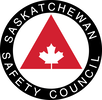
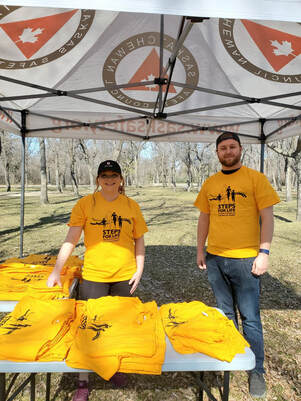
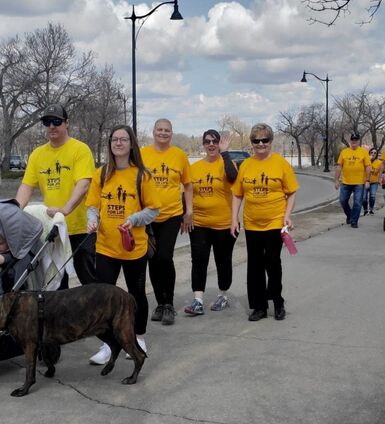
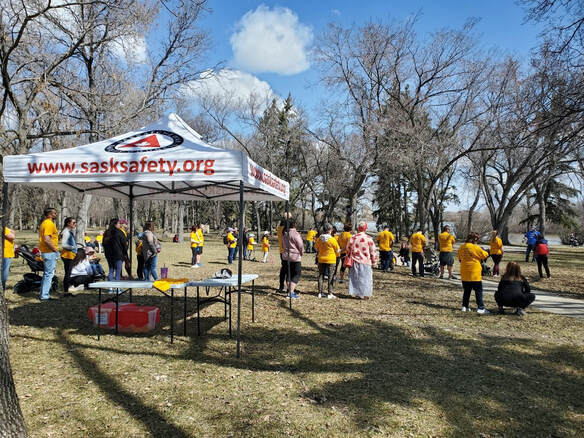
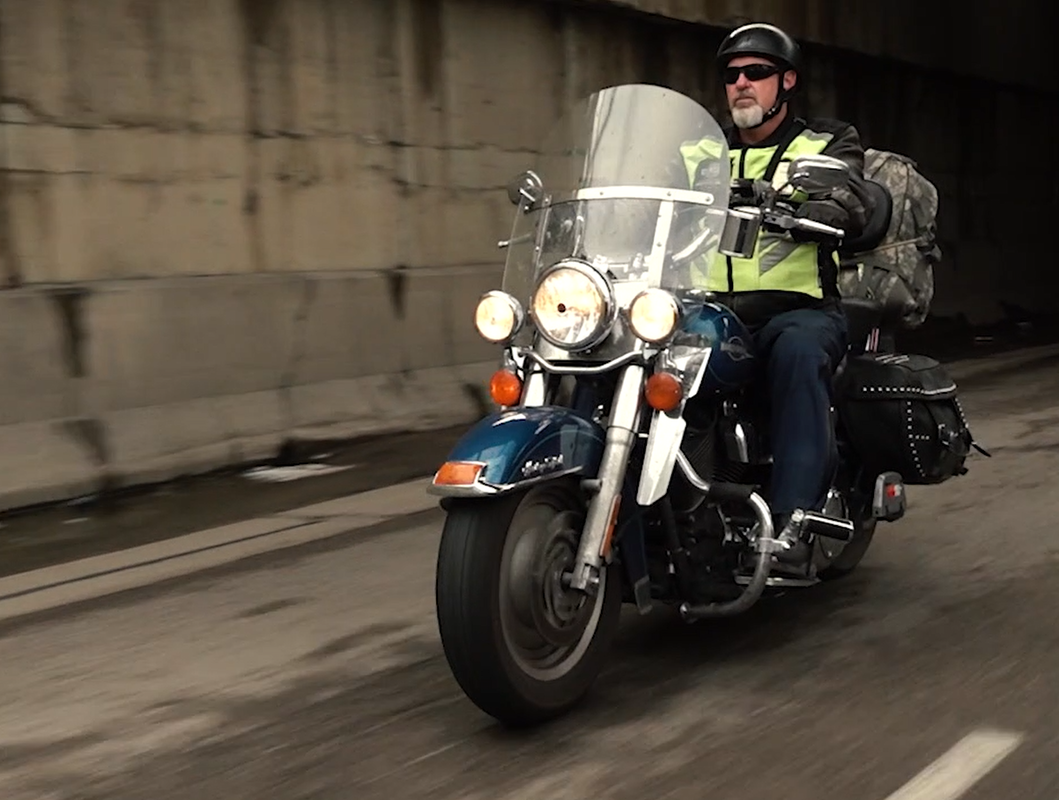
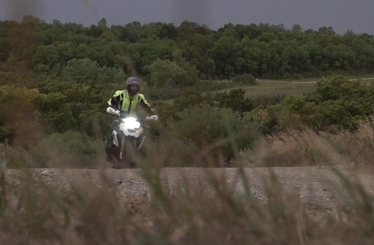
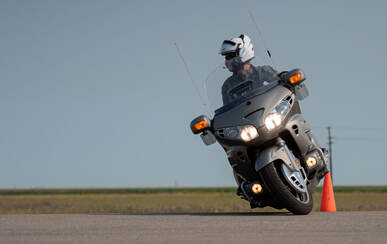
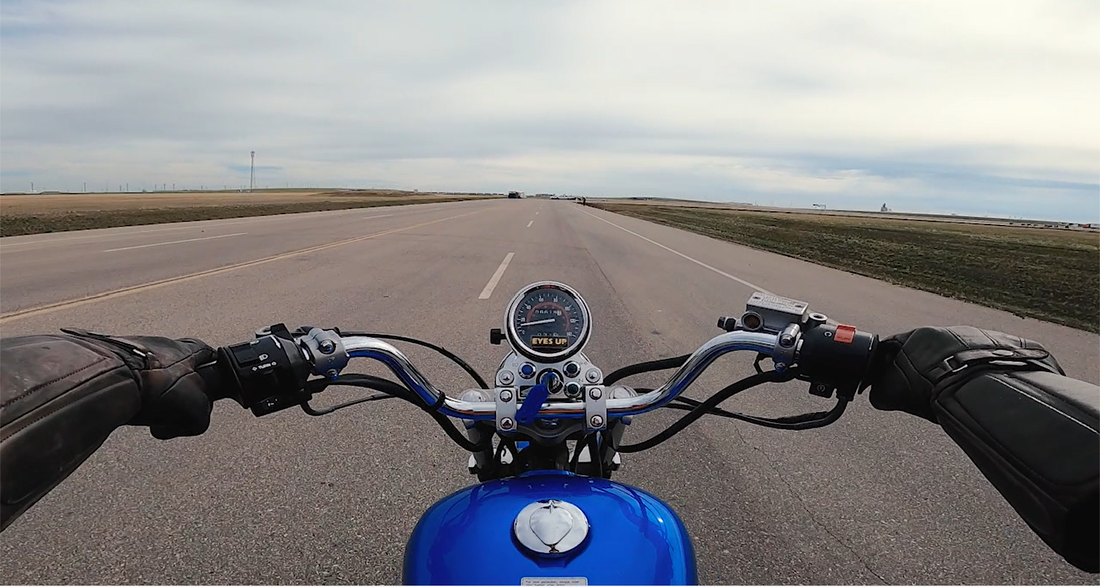
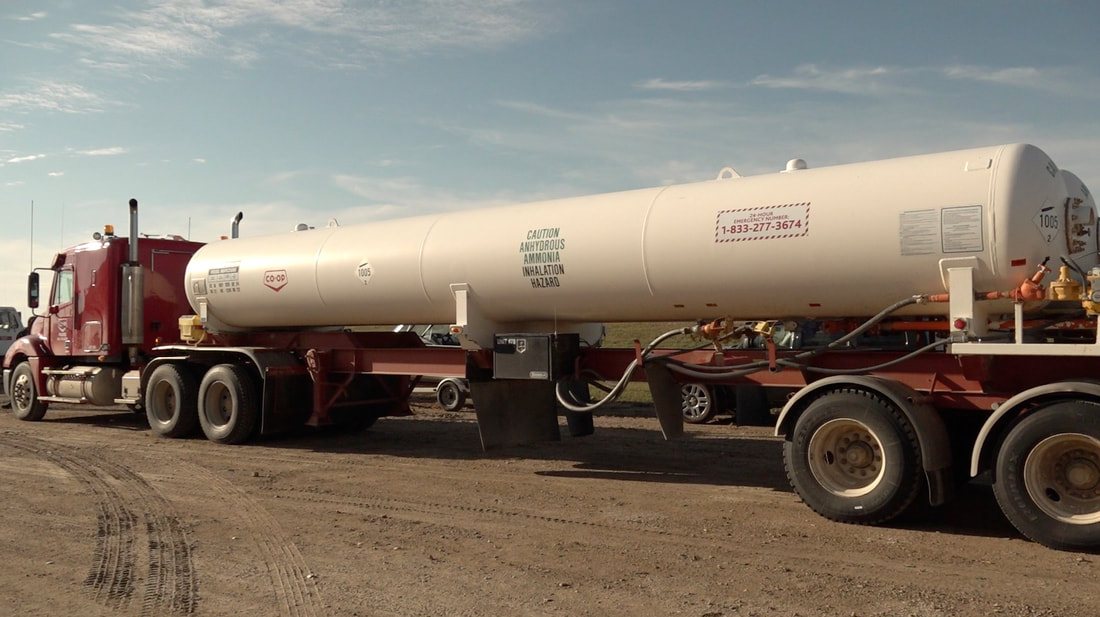
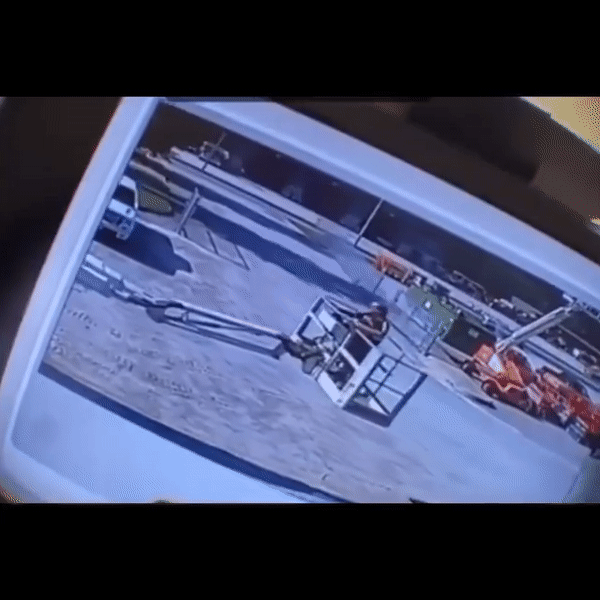
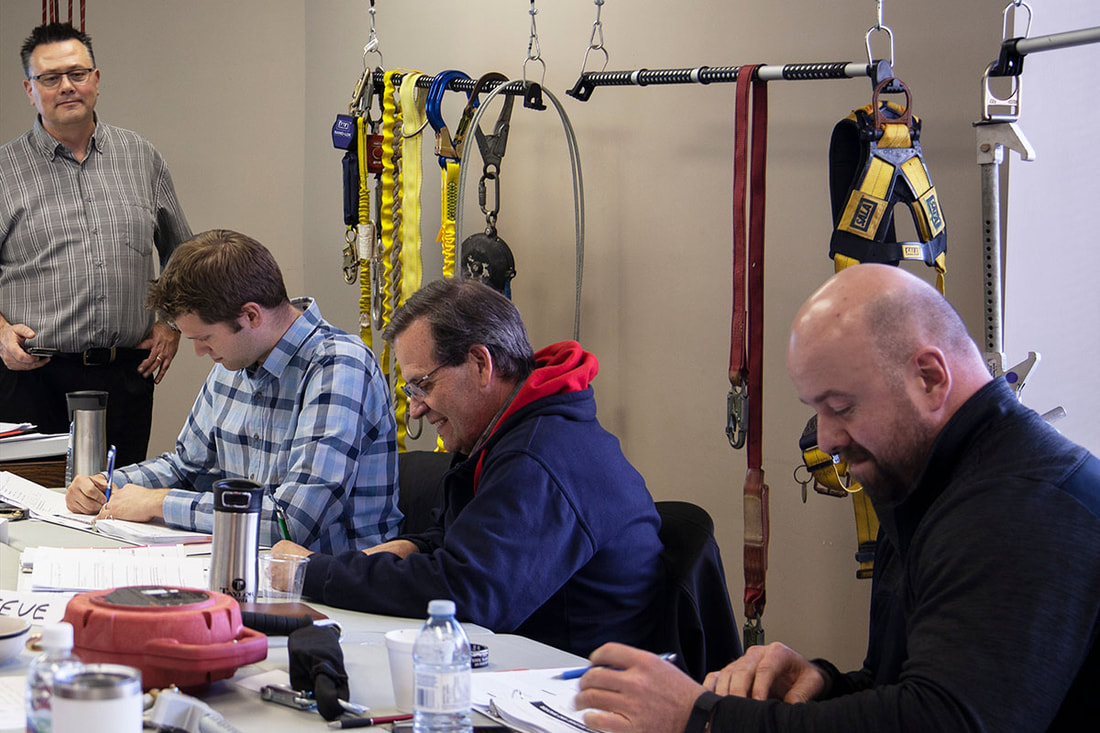
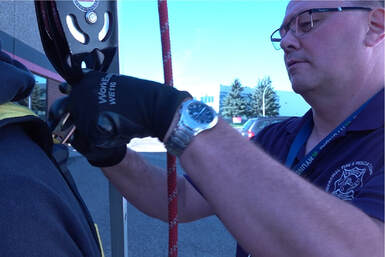



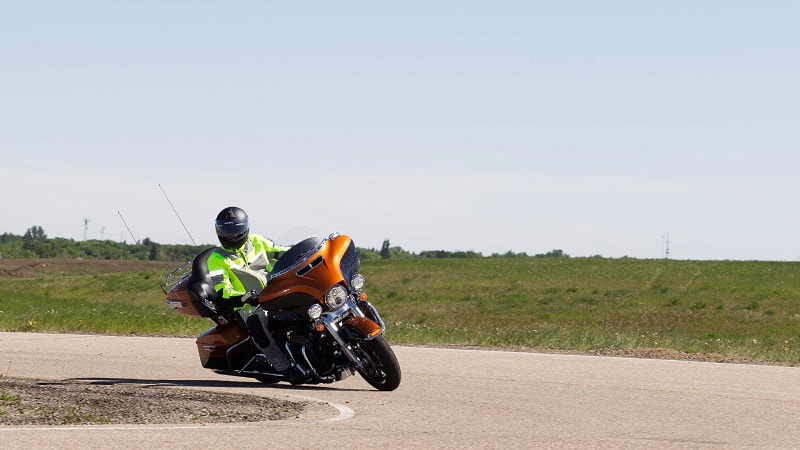

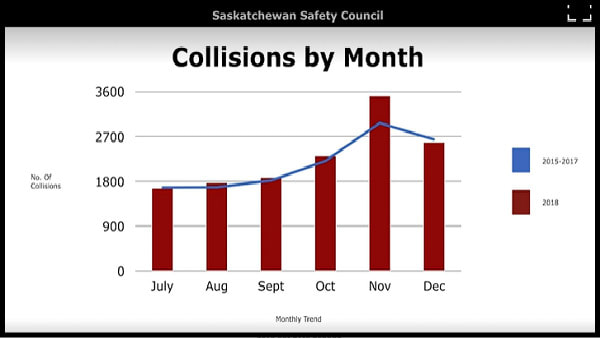
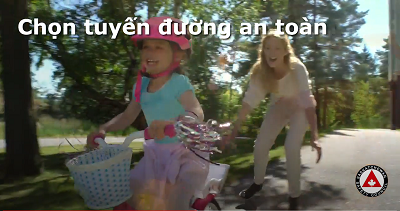
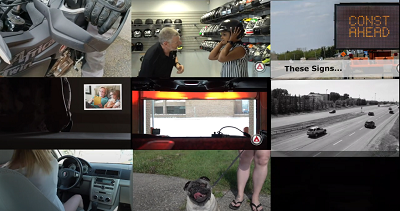
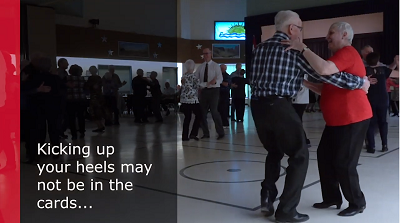
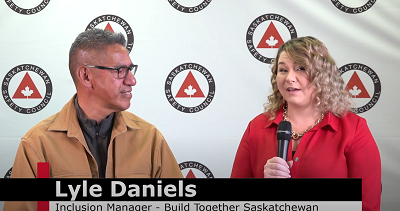
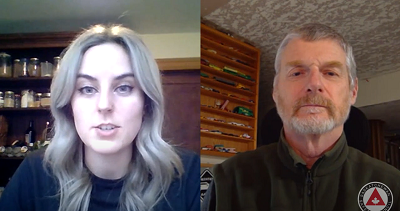
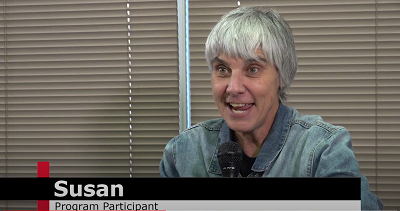

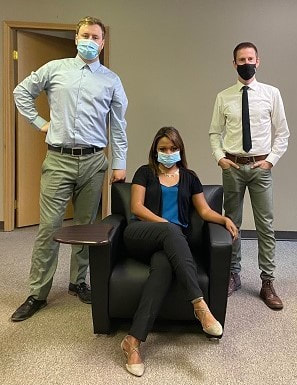
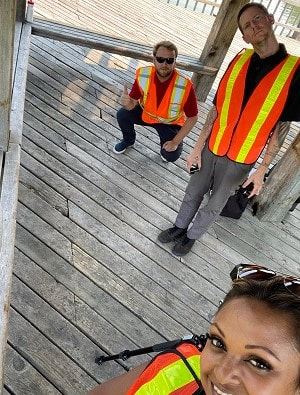
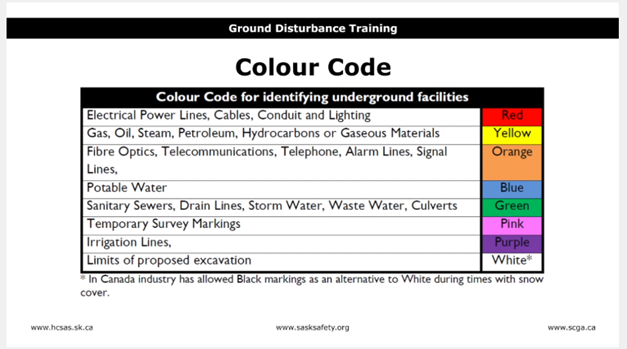
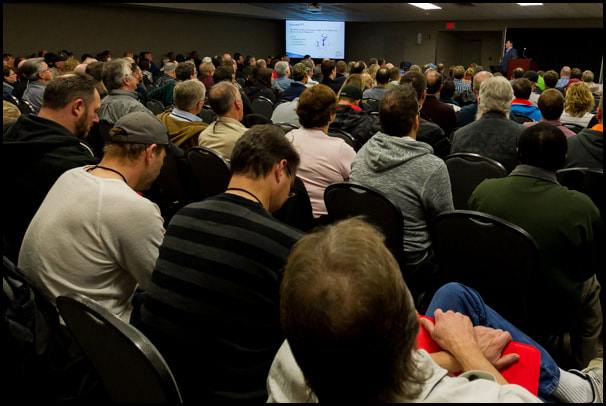

 RSS Feed
RSS Feed
